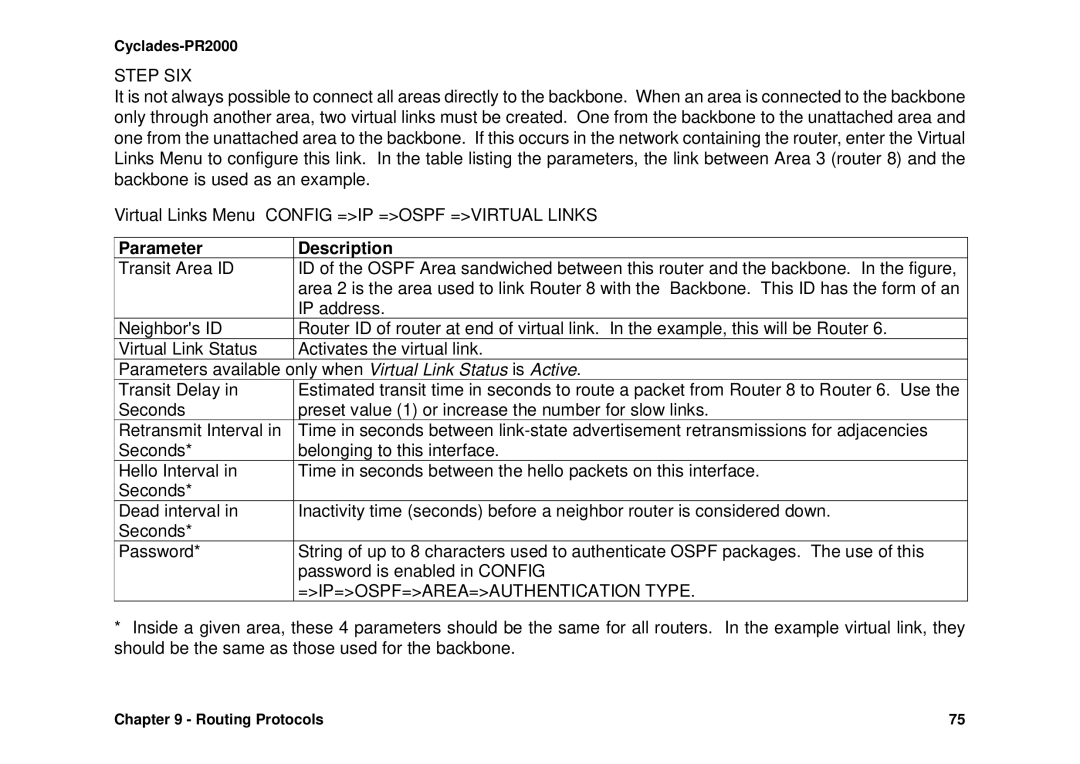Cyclades-PR2000
STEP SIX
It is not always possible to connect all areas directly to the backbone. When an area is connected to the backbone only through another area, two virtual links must be created. One from the backbone to the unattached area and one from the unattached area to the backbone. If this occurs in the network containing the router, enter the Virtual Links Menu to configure this link. In the table listing the parameters, the link between Area 3 (router 8) and the backbone is used as an example.
Virtual Links Menu CONFIG =>IP =>OSPF =>VIRTUAL LINKS
Parameter | Description |
Transit Area ID | ID of the OSPF Area sandwiched between this router and the backbone. In the figure, |
| area 2 is the area used to link Router 8 with the Backbone. This ID has the form of an |
| IP address. |
Neighbor's ID | Router ID of router at end of virtual link. In the example, this will be Router 6. |
Virtual Link Status | Activates the virtual link. |
Parameters available | only when Virtual Link Status is Active. |
Transit Delay in | Estimated transit time in seconds to route a packet from Router 8 to Router 6. Use the |
Seconds | preset value (1) or increase the number for slow links. |
Retransmit Interval in | Time in seconds between |
Seconds* | belonging to this interface. |
Hello Interval in | Time in seconds between the hello packets on this interface. |
Seconds* |
|
Dead interval in | Inactivity time (seconds) before a neighbor router is considered down. |
Seconds* |
|
Password* | String of up to 8 characters used to authenticate OSPF packages. The use of this |
| password is enabled in CONFIG |
| =>IP=>OSPF=>AREA=>AUTHENTICATION TYPE. |
*Inside a given area, these 4 parameters should be the same for all routers. In the example virtual link, they should be the same as those used for the backbone.
Chapter 9 - Routing Protocols | 75 |
